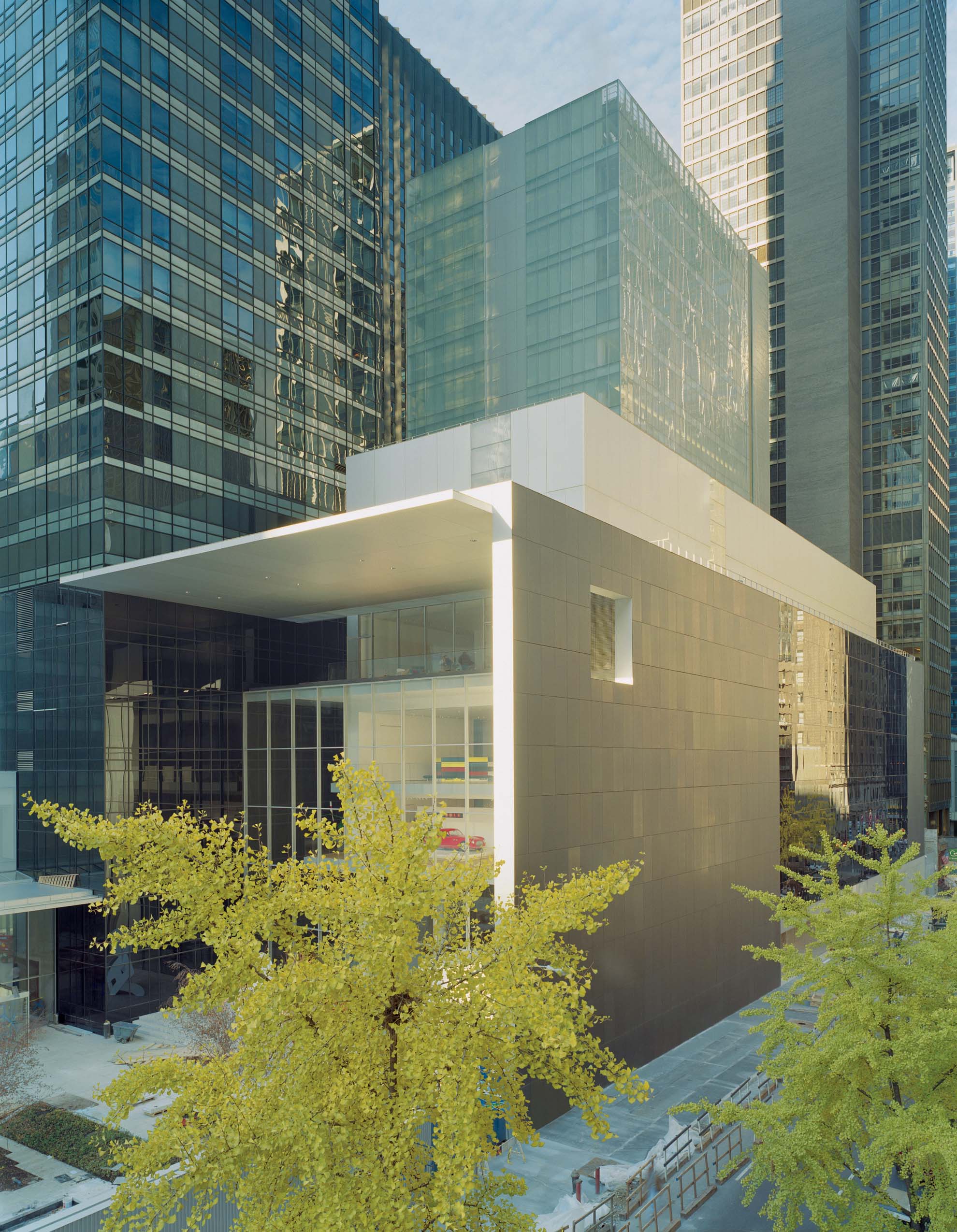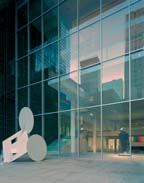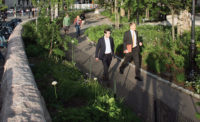
The Museum of Modern Art (MoMA) reopened in its new home in midtown Manhattan on November 20, 2004, unveiling the reinstallation of its preeminent collection of modern and contemporary art in an elegant building. Of particular note, The Abby Aldrich Rockefeller Sculpture Garden was designed with two varieties of domestic marble from Georgia.
The reopening commemorates the museum's 75th anniversary and is the most extensive rebuilding and renovation project in MoMA's history. Designed by architect Yoshio Taniguchi, the new museum integrates new construction and renovation to extend and enhance the presentation of the museum's permanent collection as well as its temporary exhibitions. Taniguchi worked closely with the museum's staff over the course of the project to develop a series of reconceived, architecturally distinctive galleries and public spaces that allow MoMA to tell the story of modern and contemporary art in an exciting new context.
Taniguchi's design weaves the building into the urban fabric of New York and reflects the vitality of the city, presenting a unique solution to the density and complexity of a midtown Manhattan site.
The design combines abundant natural light with materials such as glass, granite and aluminum to create an elegant structure that incorporates elements of visual surprise. Expanses of glass offer inviting views through the lobby to The Abby Aldrich Rockefeller Sculpture Garden, which has been restored to its larger 1953 design by Philip Johnson.

The sculpture garden
The Abby Aldrich Rockefeller Sculpture Garden was defined by Taniguchi as “perhaps the most distinctive single element of the museum today.†To that end, Taniguchi has made the restoration of this beloved urban oasis a key part of his redesign.He has extended the plan along the east, west and south facades, and restored the southern terrace. Landscape design has been carried out by Zion Breen and Richardson Associates, who have been involved in every redesign of the Sculpture Garden since 1953. Some 31 masterworks of modern sculpture, seasonal plantings and reflecting pools will once again provide visitors with a welcome respite.
Vermont Delft marble was originally chosen as the paving material for the garden because it was also used in other areas of the museum. It was discovered, however, that the material was not available in sufficient quantities because the quarry is closed.
A range of Solar and Pearl Grey from Georgia Marble was chosen instead for the project. These two marbles, like other Georgia Marble materials, are composed almost entirely (more than 98%) of one ingredient: calcium carbonate. This means that it is free of minerals and discoloring agents that could work from within to stain or discolor the material. Georgia Marble's structure is purely crystalline, with no stratification and only traces of foreign material. The myriad crystals also form an almost impenetrable barrier against moisture, dirt and discoloration, according to the company, which was an important consideration for an urban environment.
Dave King of Georgia Marble said there was a long process in being chosen for the project. “We were discussing the use of Georgia Marble for this area for over a six-month period of time prior to finding out that the Delft was not going to be an option. When the decision was finally made that Delft indeed would not be an option, the architectural team began a very intense review of Georgia Marble.â€
This review included several trips to the quarries and plant to review samples and examine the locations within the quarry that would yield the selection they wanted. Additionally, Georgia Marble shipped numerous samples to New York for review by the museum and the design team, said King. “Once the approvals came for the selection, we quarried and reserved the blocks that we felt would meet the criteria selected,†he said. “The design team again made several trips to review the blocks, and once again to approve the material prior to fabricating the pieces.â€
King pointed out that Georgia Marble has worked on a number of high-profile projects throughout its history, including such landmarks as the Lincoln Memorial, the U.S. Capitol Building and The New York Stock Exchange. “Of course, to be involved with a project with this high a profile is very important to the reputation of the company,†he said. “We played a major role in the design and development of a very treasured institution in New York.â€
A major expansion
Overall, the renovation and expansion of MoMA nearly doubles the capacity of the former building, and encompasses approximately 630,000 square feet of new and renovated space on six floors. The museum's total exhibition space has increased from 85,000 to 125,000 square feet, with galleries clustered around a soaring 110-foot-tall atrium that diffuses natural light throughout the building. In addition to the sculpture garden, the new design includes monumental windows and curtainwalls throughout the museum that afford views of the garden and the city beyond.The new building constructed at a cost of $425 million and overseen by executive architects Kohn Pedersen Fox (KPF) also features a 12,400-square-foot lobby that connects West 53rd and 54th Streets, and now provides two major entrances to the museum. On 53rd Street, Taniguchi's new facade of fritted gray and clear glass, Absolute Black granite and aluminum panels joins the meticulously restored facade of the 1939 Goodwin and Stone building, Philip Johnson's 1964 addition, and Cesar Pelli's 1984 Museum Tower to link MoMA's past with its future in a street-level panorama of architectural history.
The Goodwin and Stone building, whose restoration was designed by KPF, will now mark the entrance to the museum's Roy and Niuta Theaters and The Modern restaurant with a restoration of the original curved “piano†canopy. An entirely new design on 54th Street provides a public entrance through a serene and unified facade facing a primarily residential block. The Museum Office Building, a seven-story building housing conservation studios and offices for MoMA staff, sits atop the gallery building.
The Lewis B. and Dorothy Cullman Education and Research Building, which frames the eastern side of the Sculpture Garden, will open in 2006.
The museum's retail spaces were designed by New York architect Richard Gluckman of Gluckman Mayner Architects, whose notable museum projects include Dia Center for the Arts, New York City and The Andy Warhol museum, Pittsburgh. The retail architecture has been designed to complement the work of Yoshio Taniguchi.
The Modern Restaurant, The Bar Room and Cafe 2 were designed by Bentel & Bentel, architects for several other Danny Meyer restaurants. This avowedly modernist practice often incorporates art into their work and focuses on enhancing the dining experience through a blend of materials selection and use of space.
“We are thrilled to reach the fruition of our efforts in the completion of this project,†said Museum Director Glenn D. Lowry. “We invite the public to enjoy the sublime spaces designed by Yoshio Taniguchi, to discover our collection anew, and to see installations and exhibitions in a way that will engage attention and provoke thought.â€
